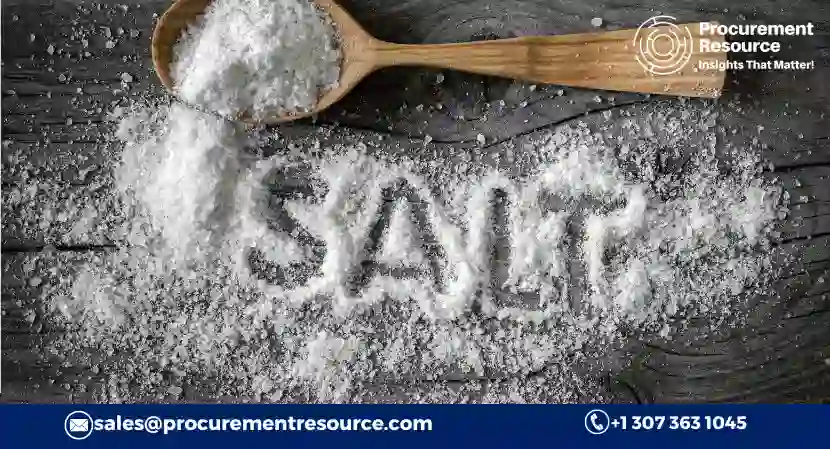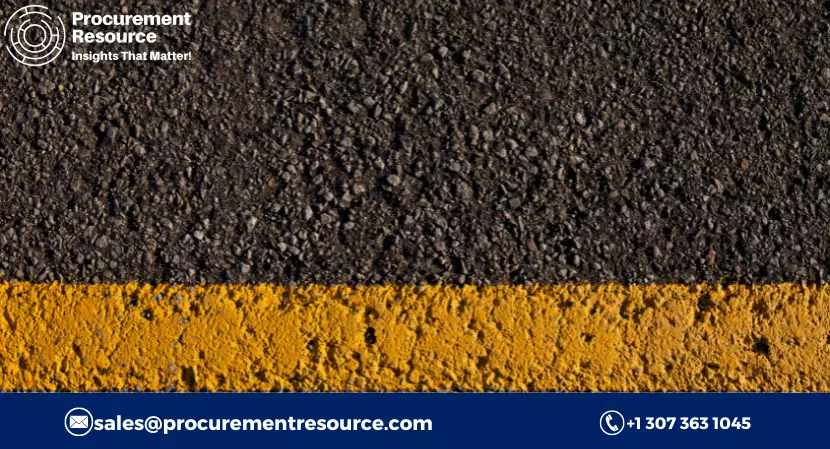The latest report titled “PVD Salt Production Cost Report” by Procurement Resource, a global procurement research and consulting firm, provides an in-depth cost analysis of the production process of the PVD Salt.
| Report Features | Details |
| Product Name | PVD Salt |
| Process Included | PVD Salt Production From Vacuum Technology |
| Segments Covered |
|
| Currency | US$ (Data can also be provided in local currency) |
| Pricing and purchase options | Basic: US$ 1499 Premium: US$ 2999 Enterprise: US$ 4799 |
| Customization Scope | The report can be customized as per the requirements of the customer |
| Post-Sale Analyst Support | 360-degree analyst support after report delivery |
Procurement Resource study is based on the latest prices and other economic data available. It also offers additional analysis of the report with detailed breakdown of all cost components (capital investment details, production cost details, economics for another plant location, dynamic cost model). In addition, the report incorporates the manufacturing process with detailed process and material flow, capital investment, operating costs along with financial expenses and depreciation charges.
Procurement Resource’s detailed report describes the stepwise consumption of material and utilities along with a detailed process flow diagram. Furthermore, the study assesses the latest developments within the industry that might influence PVD Salt production cost, looking into capacity expansions, plant turnarounds, mergers, acquisitions, and investments.
Procurement Resource Assessment of PVD Salt Production Process:
1. PVD Salt Production Cost Breakup Through Vacuum Pumps: This report contains a broad cost evaluation of PVD Salt. The process begins with making a salt solution by flooding it with water. From the flooded brine, the insoluble materials are pumped out into a brine clarifier, where they sink to the bottom and are extracted, resulting in a clear brine solution that gets sent to a brine tank. Some essential chemicals are added to split the calcium salts and magnesium present from the salt in the brine tank.
After the filtration process, the brine gets moved to the last brine tank, from where the saturated brine is sent to a steady evaporation system, where it crystallises and is then piped in the form of a slurry into a concentrate tank. Following that, a hydro-cyclone battery is employed in order to concentrate the salt slurry to a maximum of 50–60%.
In a centrifuge, the slurry is placed, which creates salt cakes containing 4-5% moisture. Next, a smooth conveyor feeds the salt containing 4-5% moisture into a fluid bed drier, where iodisation is concluded. Using warm and ambient air, the salt is fluidised in the Vibro fluid bed dryer prior to it being dried and chilled. Afterwards, the salt is received by a sieve machine via a bucket elevator. The extra-large particles get collected and shifted to the brine tank for final re-dissolution.
Later, the free-flowing agent is mixed with the crystallised salt in a screw mixer prior to being transferred to a storage silo. Finally, PVD salt is collected.
Request Free Sample – https://www.procurementresource.com/cost-analysis/pvd-salt-production-through-vacuum-pumps/requestsample
2. PVD Salt Production Via Brine Tank – This report contains a broad cost evaluation of PVD Salt via brine tank. Making a salt solution by flooding it with water is the first step in the procedure. The insoluble materials in the flooded brine are pumped out to a brine clarifier, where they settle to the bottom and are removed, leaving a clear brine solution that is then sent to a brine tank. In order to separate the magnesium and calcium salts present in addition to the salt in the brine tank, the necessary chemicals are added.
Following filtration, the brine is transferred to the last brine tank. From this tank, saturated brine is delivered to a continuous evaporation system, where it crystallises and is piped as slurry into a concentrate tank. After that, a hydro-cyclone battery is used to concentrate the salt slurry to a maximum of 50–60%.
This slurry is placed into a centrifuge, which produces salt cakes with 4-5% moisture. A smooth conveyor feeds the salt, which contains 4-5% moisture, to a fluid bed drier, where the iodisation is finished. The salt is fluidized by warm and ambient air in the Vibro fluid bed dryer before being dried and cooled. After that, a sieve machine receives the salt through a bucket elevator. The extra-large particles are gathered and transferred to the brine tank for ultimate re-dissolution.
Request Free Sample – https://www.procurementresource.com/cost-analysis/pvd-salt-production-via-brine-tank/requestsample
Product Definition:
PVD Salt, also known as Pure Vacuum Dried Salt, is a salt classified as food-grade. It looks like a white crystalline substance that is derived by pumping water deep underground into hard salt reserves. It is odourless with a distinctly salty taste.
Market Drivers:
PVD Salt finds application for several industrial applications, like in agricultural chemical processing, where it is used in treating water that drives its market demand. Industrial salt is extensively used to make chlorine and caustic soda which is another end-use boosting the industry’s growth. Other such applications of the product include downstream industries like glass, cosmetics and the pharmaceutical industry.
Key Questions Answered in the PVD Salt Production Cost Report:
- What are the key drivers propelling the PVD Salt market?
- What are the various processes used for PVD Salt production?
- What are the raw materials required to produce PVD Salt?
- What are the different operations units involved in the production of PVD Salt?
- What are the manpower and utility requirements in the production process of PVD Salt?
- What are the various costs engaged in the production of PVD Salt?
- What are the construction costs involved in setting up a PVD Salt production facility?
- What are the working capital requirements?
- What is the process of raw material procurement for PVD Salt production?
- What is the time frame for PVD Salt plant start-up?
- What is the pricing mechanism of PVD Salt?
Browse More Production Cost Reports:
- Protease Production Cost Reports – https://www.procurementresource.com/production-cost-report-store/protease
- PTA (Purified Terephthalic Acid) Production Cost Reports – https://www.procurementresource.com/production-cost-report-store/pta-purified-terephthalic-acid
- Purified Isophthalic Acid (PIA) Production Cost Reports – https://www.procurementresource.com/production-cost-report-store/purified-isophthalic-acid-pia
About Us:
Procurement Resource ensures that our clients remain at the vanguard of their industries by providing actionable procurement intelligence with the help of our expert analysts, researchers, and domain experts. Our team of highly seasoned analysts undertakes extensive research to provide our customers with the latest and up-to-date market reports, cost models, price analysis, benchmarking, and category insights, which aid in simplifying the procurement process for our clientele.
Procurement Resource work with a diverse range of procurement teams across industries to get real-time data and insights that can be effectively implemented by our customers. As a team of experts, we also track the prices and production costs of an extensive range of goods and commodities, thus, providing you with updated and reliable data.
We, at Procurement Resource, with the help of the latest and cutting-edge techniques in the industry, help our clients understand the supply chain, procurement, and industry climate so that they can form strategies that ensure their optimum growth.
Contact Us:
Company Name: Procurement Resource
Contact Person: Amanda Williams
Email: sales@procurementresource.com
Toll Free Number: USA & Canada – Phone no: +1 307 363 1045 | UK – Phone no: +44 7537 132103 | Asia-Pacific (APAC) – Phone no: +91 1203185500
Address: 30 North Gould Street, Sheridan, WY 82801, USA


